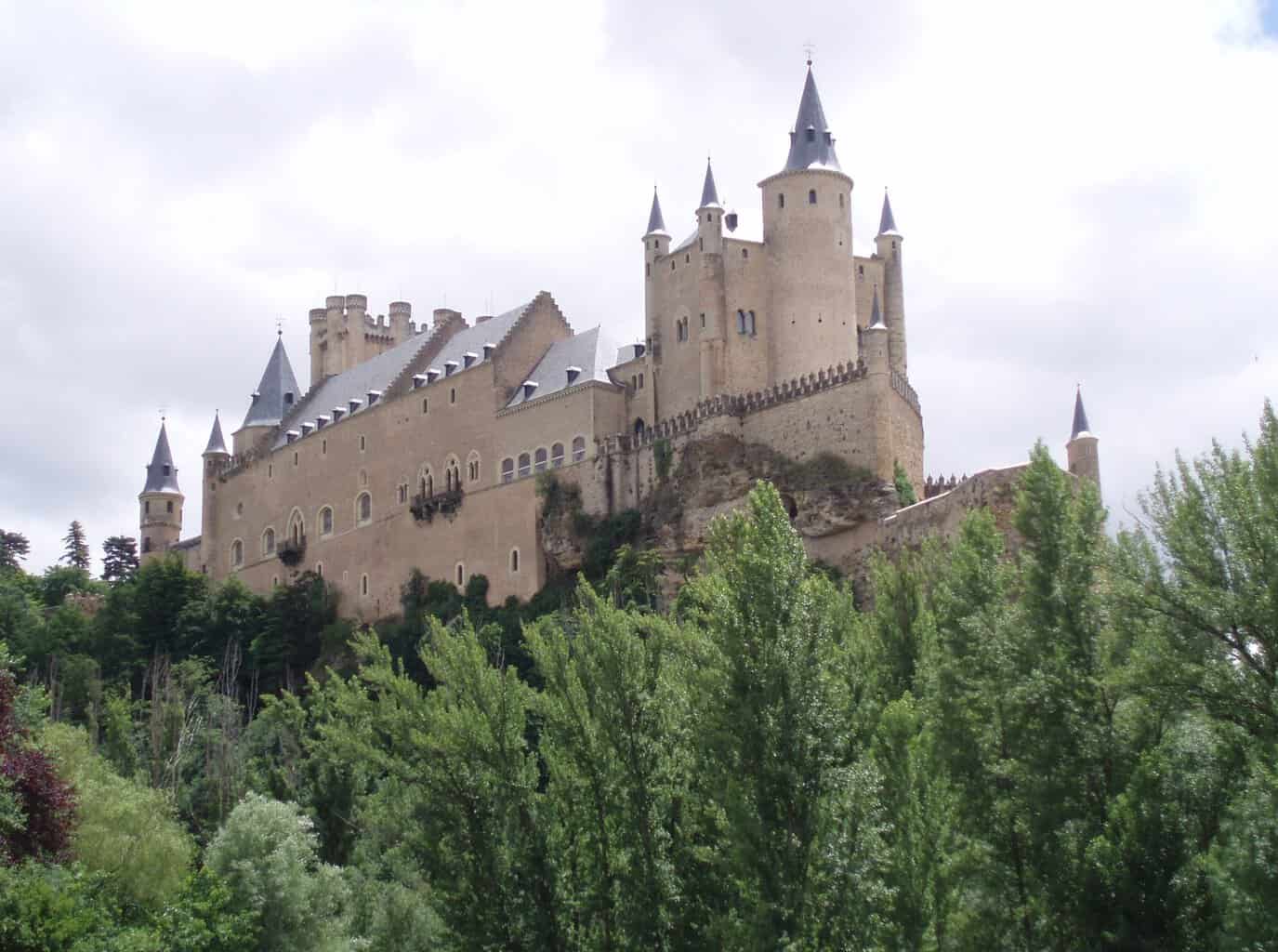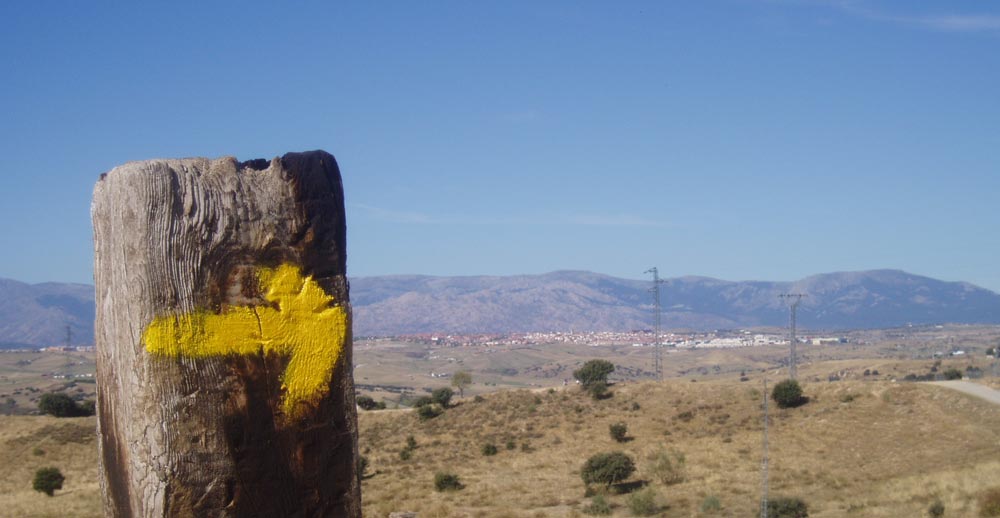Although not that well-known among pilgrims, the Camino Madrid is another great starting point for a Camino to Santiago. Although there is not much concrete information about the origins of this route, the remains in Puerto de la Fuenfría in Sierra de Guadarrama indicate the way has been used for many centuries to transport cattle and trade with the northern peninsula.
Nonetheless, as you walk, you will come across many historic churches, chapels, signs, and relics dedicated to St James that let us know the way was popular and cherished by pilgrims starting from central Spain. Although still somewhat unknown, the route offers a truly breathtaking experience.
Overview of Camino Madrid
Camino de Madrid takes you northwest of the country pretty much in a straight line crossing regions of Madrid, Segovia and Valladolid until it reaches the province of Leon where it joins Camino Frances in Sahagún and turns west. The approximate distance from Madrid to Sahagún is 322 km and can be walked in more or less two weeks time, depending on the number of breaks you take.
The route will surprise you by its clandestine beauty by mostly staying faithful to footpaths and staying away from asphalt roads. In part over the Puerto Fuenfria in the Sierra de Guadarrama which we mentioned earlier; it also gives you a great opportunity to walk on stretches of ancient Roman road. However, in my opinion, the biggest highlight of this Camino is the lack of big industrial towns along the way. Instead, your path is riddled with lovely market towns and picturesque villages. Plus, Madrid is probably the most easily reached Camino starting point in the whole of Spain.
Terrain
As I mentioned, the way to sticks almost entirely to footpaths leading you through forested areas away from industrial monuments of modern civilization. Despite that, the terrain is not as challenging as one might expect.
The first 100 kilometers the route leads up the hills of Sierra de Guadarrama testing you with a slightly stiff climb of 650 m within the extent of only 8 km until you reach Puerto de Fuenfria. After that, there is a somewhat less demanding descent to Segovia and from then on the terrain is more or less flat. The Camino takes you through the valleys carved by rivers Eresma and Voltoya until the river Duero. You will be able to enjoy quiet sandhills, the shade of pine forests as well as wide open spaces and, in the last section from Duero to Sahagún, you will encounter the profound vastness of Spanish Mesetas, large field areas that offer truly unique views.
Waymarking
The renovation of the waymarking of the Madrid route took place in 1996 thanks to the efforts of the Asociación de los Amigos de los Caminos de Santiago de Madrid. Later, during the campaign of 2001-2003, the association decided also to mark the route with granite and wooden milestones. Thanks to their efforts the waymarking is virtually perfect all along the way not giving you a chance of getting lost.
When To Go
The peculiarities of Camino de Madrid leave you with very limited periods when comfortable travel is possible.
It is recommended not to walk this way during summer (especially July and August) as it’s incredibly hot, and there is not much shade in many parts of the route. On the other hand, early spring is also not advised as the mountainous areas can be tricky at this time of the year (for example, the snow holds on the Sierra de Guadarrama until May).
Late spring (early summer) are OK but the ideal season for this Camino is definitely early autumn although count on a bit of rain.
Accommodation
You will not have much trouble looking for accommodation directly in Madrid. However, from there until Segovia the albergues or hostels are rather scarce so it is wise to plan the first part of the journey more carefully. From Segovia to Sahagún the offer of albergues is much wider and allows you to advance in smaller stages, if you prefer, with some type of refugio or albergue every 15 km on average. Once you are on Camino Francés, the albergues are abundant.
What to See
Well, naturally, if you have time do not miss out on Madrid as a whole, the city has a lot to offer. Next, pay attention when crossing Segovia which is a World Heritage City with and stunning Gothic cathedral and plenty of Romanesque churches. In Coca, you will come across a red brick castle that mixes Gothic and Mudéjar architecture, and you should definitely spend some time in the picturesque village of Wamba. All in all, the route is dotted with historic churches, chapels, and evidence of Roman presence and activity in the area, so you will not be bored.
Best Guide Books
Currently, the best and most accurate guide on the market is Camino de Madrid, The Confraternity of Saint James, last published in 2017 by Angelika Schneider & Johnnie Walker. You can purchase in the Confraternity’s online shop which offers both hard copy and Kindle versions. The great thing is that if you don’t want to spend any money, you can download an older version of the guide for free in PDF and combine it with the equally free update sheets.
Travel Along the Route
The quickest way to find bus or train connections is a handy website goeuro.com. The site is in English and provides a list of bus, train and flight connections from multiple companies in Spain as well as other countries. It is a good place to look up long as well as short distance transits.
Why Camino de Madrid?
For me, the winning feature of the Camino de Madrid is the fact that it doesn’t cross any of the tedious industrial areas, allowing you to truly unplug. It’s an excellent choice if you are looking to connect with nature and enjoy quiet moments of solitude. Plus, the route is not too challenging and is extremely well waymarked, so it’s not a bad choice for first-time pilgrims either.

I love hiking, backpacking, and camping. From the Camino de Santiago to the West Highland Way in Scotland or simply a great day hike on the weekend. Hiking refreshes me, my mind, and keeps my body reasonably fit. So far I have walked three Camino routes and many other long distance hikes in the UK, Canada, and around the rest of Europe. One of the best was my hike up Ben Nevis.


